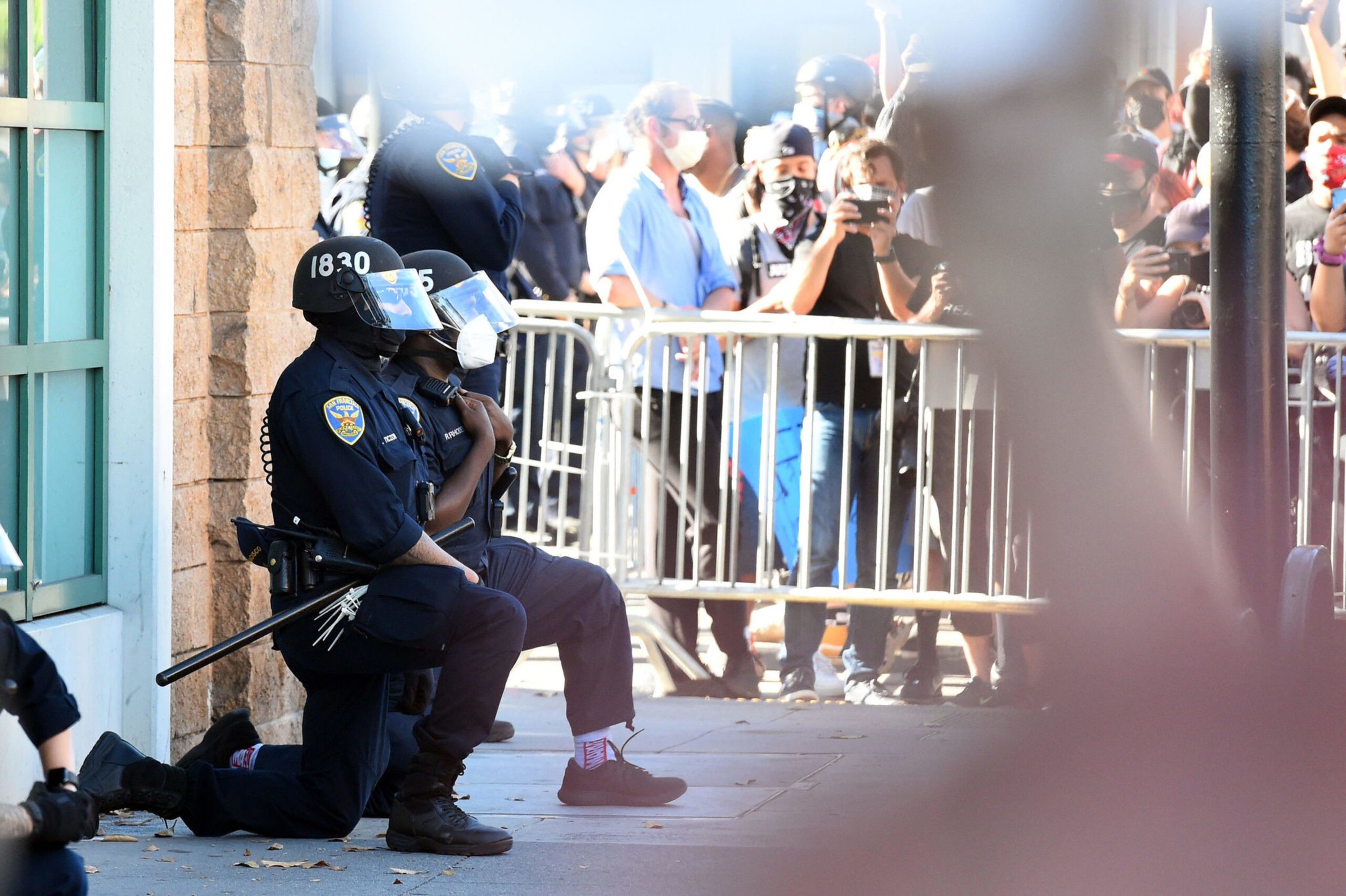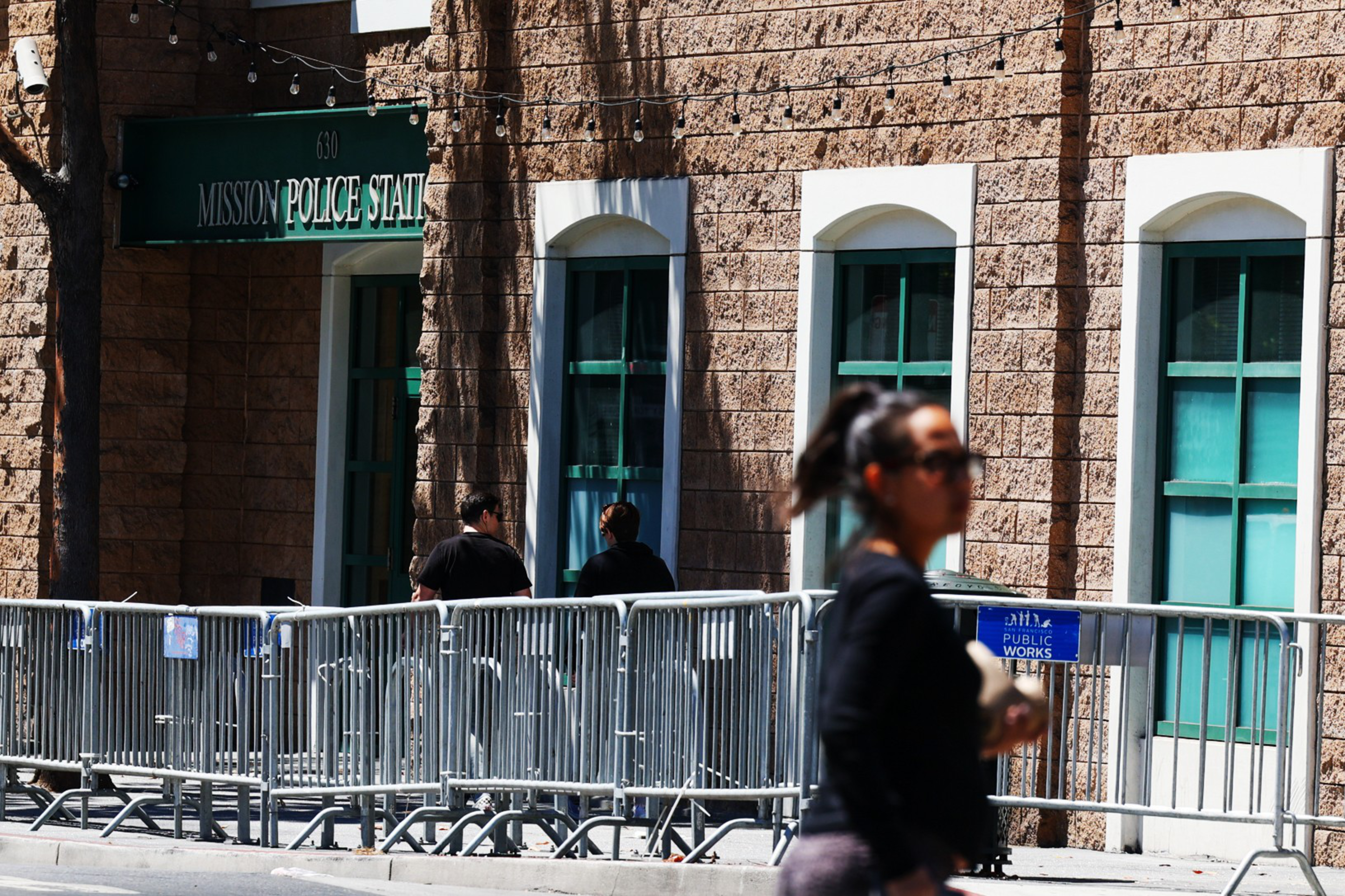The metal barricades went up in the wake of the George Floyd protests and have blocked the sidewalks around the San Francisco Police Department’s Mission Station ever since.
Now, two years later—close to where the city erected fences around the 24th Street-Mission BART stop—SFPD wants to install more permanent barricades around the neighborhood’s police station that some community members are asking the city to take down.
Luke Bornheimer—an organizer with Community Spaces SF (opens in new tab), a group that advocates for car-free streets and public gathering spots—said the barriers obstruct a sidewalk people have a right to use. He said the fencing that lines about half the block of 17th and Valencia streets also symbolize a divide between police and the public they swore to protect.
But when he brought those concerns to Capt. M. Gavin McEachern, who’s in charge of the Mission station, Bornheimer received a perfunctory response about how SFPD is actually looking for more permanent and nicer-looking replacements.

So, the public space advocate took to Twitter to air his grievances and share the back-and-forth he had with SFPD.
According to screenshots he shared on the social media platform, Bornheimer told McEachern that the barricades “are an issue for pedestrians, people using bikes and people with disabilities, and have negatively impacted business and quality of life along the block of Valencia and 17th and 18th.”
“Can you please have these metal barricades removed?” Bornheimer wrote to the captain. “When is the earliest that they can be removed?”
He even volunteered to help dismantle them.
In response, McEachern wrote that he will “look into the matter,” according to correspondence Bornheimer shared on Twitter.
“I can tell you that we have asked for a more permanent and atheistically (sic) pleasing replacement for these barricades,” he added, “but as of yet our requests to the city have been ignored.”
Bornheimer thanked the captain for his response, but said the community’s hope was to remove the barricades—not replace them.
“What was the original purpose of the barricades being placed there, why are the barricades still there and what needs to happen for the barricades to be removed (and not replaced with permanent barricades)?” Bornheimer asked.
He ended his email by again offering help to take the metal barriers down.
Capt. McEachern kept his reply brief: “Understood,” he wrote.
Bornheimer was none too pleased with the one-word answer.
Speaking to The Standard, the public-spaces advocate called the laconic reply “emblematic of (SFPD’s) ability to do and say whatever they want,” which he said is “concerning to see with someone who wants to build relationships with their community.”
In an email with The Standard, McEachern explained that the barricades were put in place to protect police.
“The fences were installed during the time of the George Floyd protests and served to protect the station and the officers in front of the station during the many protests that gathered in front,” McEachern wrote in an email. “Mission Station has been a targeted location for volatile protests in the past and continues to attract various protests.”
The SFPD’s Mission barricades align with a trend of various city amenities that have been fenced off in the past years such as the Mission BART station plazas and the UN plaza.
